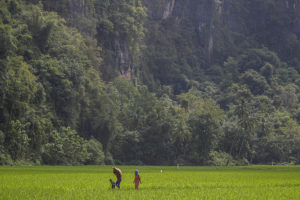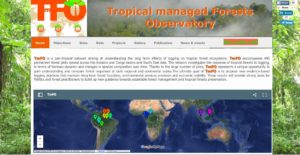
The CGIAR Research Program on Forests, Trees and Agroforestry (FTA) is entering its next phase in 2017; this is an opportunity to take stock of the partnerships that made this research program a success and to look at the new partners who will come on board. In several upcoming blog posts and interviews, we are showcasing partnerships that can serve as examples, in the knowledge that it took hundreds of partners to make it work: donor agencies, research institutes and universities, government bodies, nongovernmental organizations and farmers on the ground. For our first blog, we asked the previous FTA Director Robert Nasi about the FTA partnership model and what worked well. You can find more stories on partnerships here.
Partnerships are key to the delivery pathways of FTA; also we have many different levels and types of partnerships within the program, spanning research, capacity development, outreach, implementation, and more.
The core management partnership is between the Center for International Forestry Research (CIFOR), Agricultural Research for Development (CIRAD), Bioversity International, Tropical Agricultural Research and Higher Education Center [Centro Agronómico Tropical de Investigación y Enseñanza], (CATIE), the International Center for Tropical Agriculture (CIAT) and the World Agroforestry Centre (ICRAF).
This partnership has been effective although we had a rather difficult starting point in 2011 when centers were essentially competing for leadership of the different Research Programs.
Also read: CGIAR Research Program on Forests, Trees and Agroforestry has new Director
Developing and implementing FTA research gave us the opportunity to sit and plan together, to exchange knowledge and ideas and to learn to value each other. And now, after five years, we can see an increased level of solidarity between partners in developing and getting over the various hurdles during the joint preparation of the proposal for the next phase.

We can honestly say that we have moved from a competitive to a more collaborative approach. Of course there still is and will be some level of competition because of the nature of the work and the funding context but we are becoming more and more collaborative in our fundraising efforts.
We now have a mature partnership so we can address hard issues up front and solve them together. For me, this is real success and proof of a real partnership.
New partners joining
The fact that new partners, such as Tropenbos International and the International Network for Bamboo and Rattan (INBAR) want to join us demonstrates the value and reputation of the FTA as a partnership. They want to come on board as core partners for the new phase because they are interested in the research agenda and because FTA as a program adds value to their work. Partners are interested because of the things we do and because of the added value of being part of an integrated effort more than for the prospect of getting a huge amount of money.
Bigger than the sum of its parts

We have developed specific partnerships within FTA that are bigger than the program, for example the Tropical managed Forests Observatory (TmFO), led by CIRAD which has 22 institutions working in it. The Partnership for the Tropical Forest Margins (ASB) and the Sentinel Landscapes project are other partnerships within FTA.
Working through the difficulties
During the last 24 months, we have had some issues with commitment to our partners because of unplanned budget cuts but thanks to the maturity of the partnership we have managed to overcome these and keep people on board (even after cutting their budget by more than 50% in some cases).
There is still some room for improvement. It is not always easy for people in one institution to understand what is happening in another in terms of budget management or internal procedures. It is often challenging for non-CGIAR partners to respond to specific CGIAR requests.
This has created some practical issues, but we’ve always managed to sort it out. So, all in all, FTA in a short number of years and in a difficult budget environment, has managed to gather up six competitive organizations at the top of their field in forest, trees, agroforestry and land use research, to work together in a real collaborative way. And the decision by the CGIAR System Council to continue this vast integrated program for another six years confirms that FTA phase 1 was a real success story.
Long-term relationships and mutual trust—partnerships and research on climate change
The best science is nothing without local voices: Partnerships and landscapes
Influence flows both ways: Partnerships are key to research on Livelihood systems











